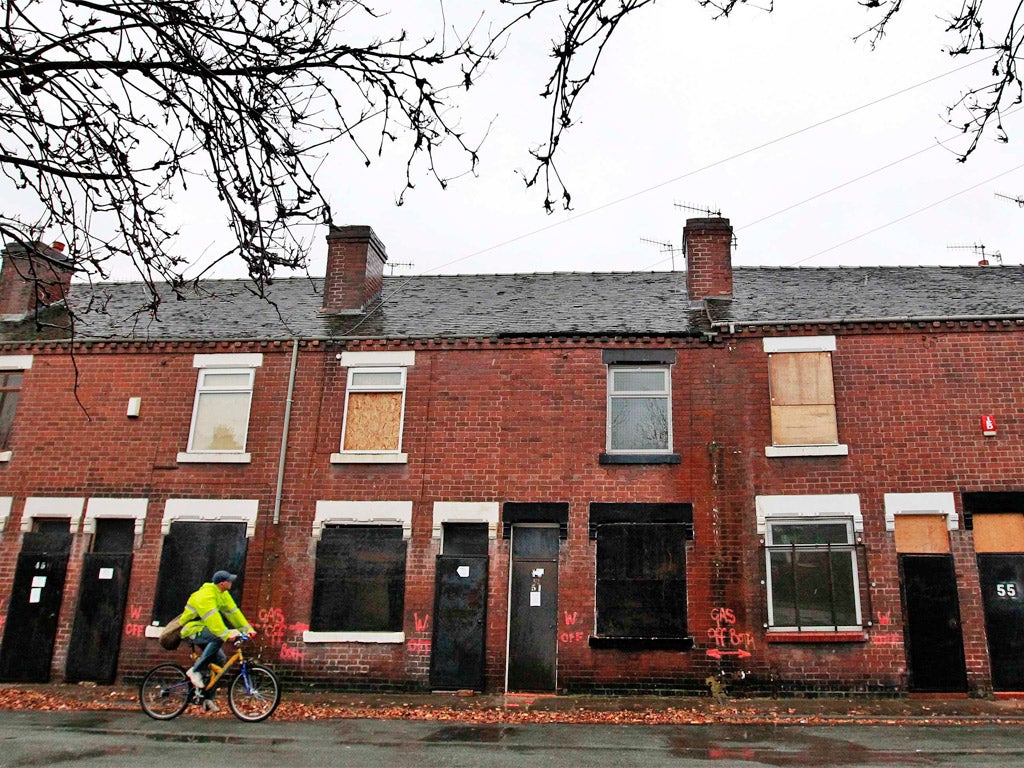Could your spare room be the answer to the broken housing market?
Chancellor pledges more cheap homes, but is it time to look again at the UK’s unused spaces?

Your support helps us to tell the story
From reproductive rights to climate change to Big Tech, The Independent is on the ground when the story is developing. Whether it's investigating the financials of Elon Musk's pro-Trump PAC or producing our latest documentary, 'The A Word', which shines a light on the American women fighting for reproductive rights, we know how important it is to parse out the facts from the messaging.
At such a critical moment in US history, we need reporters on the ground. Your donation allows us to keep sending journalists to speak to both sides of the story.
The Independent is trusted by Americans across the entire political spectrum. And unlike many other quality news outlets, we choose not to lock Americans out of our reporting and analysis with paywalls. We believe quality journalism should be available to everyone, paid for by those who can afford it.
Your support makes all the difference.Another financial statement from chancellor Philip Hammond this week came with yet another pledge to fix the housing market with yet more affordable housing.
In his Spring Statement, horribly scheduled though it was between a flurry of desperate Brexit-based votes in parliament, the man in charge of the nation’s finances announced an extra 37,000 new homes on top of the promise to deliver 300,000 a year by the end of this parliament.
The plan would mean “unlocking” another £717m from the grant introduced in 2017 to invest in new homes – the Housing Infrastructure Fund – with a total of £3bn invested in this latest plan to doggedly pursue a policy of simply adding to the existing stock of homes in a bid to rebalance the supply/demand ratio.
But with precious little action to deal with the causes rather than symptoms, the frustration among property experts is now almost palpable.
“Anything which improves the supply of affordable housing is to be welcomed but we have heard it all before,” says Jeremy Leaf, north London estate agent and a former RICS residential chairman.
“We want to see a timetable for delivery, which will keep prices in check and meet demand irrespective of political and economic uncertainty, rather than just empty promises.”
In fact, the chancellor is already missing his target of 300,000 homes a year. Meanwhile, other schemes designed to rebuild an equilibrium between wages and property prices seem to have either had no effect, little uptake or done more harm than good.
So what now?
Same ideas, new approach
At the same time that homebuilders are rubbing their hands together with glee at the chancellor’s latest pronouncements, new figures out this week suggest the number of properties that are standing empty is rising rapidly.
Up by more than 5 percentage points in the last year alone, the number of empty homes in England stood at 216,186 in the 12 months to October 2018. That’s worth more than £53bn, according to an analysis of official data from the Ministry of Housing by modular homes provider Project Etopia.
Though the biggest rise was in Portsmouth, with the number of empty properties doubling in more than a year, Birmingham remains the worst offender with 4,283 long-term empty properties.
And that’s just the housing stock that is completely empty.
Sharing economy
There are more than 30 million dwellings in the UK and that equates to more than 84 million bedrooms, according to data by room-share platform ideal flatmate.
According to the ONS, the current UK population is 65.7 million and that means, as a nation, we already have a surplus of 28 per cent or 18.6 million spare rooms.
That’s assuming that on a very top level, one person occupied one bedroom although the reality is that this surplus is likely to be much higher.
With space at a premium, it is somewhat surprising that this surplus is highest in the capital, where there’s an oversupply of 67 per cent between the number of bedrooms compared with the population.
The second largest oversupply is in Wales, where there’s a 38 per cent difference in the number of rooms available to the local population.
The lowest ratio is in the southeast, but with an additional 1,384,293 spare rooms, the oversupply ratio is still 15 per cent.
Many of these are owned by the over 55s, 30 per cent of whom never reclaim them after grown-up children move out. When they do – usually waiting more than a year before taking action – the space is used for hobbies, a guest room, even turned over to just house “junk”, according to research from equity release business SunLife.
Though some will take years to even redecorate, almost two-thirds of those with spare rooms over the age of 55 wouldn’t consider downsizing.
“The lack of housing stock being delivered by the government to meet home buyer demand has not only pushed up house prices but has also put further strain on a rentals market that was already buckling under the pressure,” says Tom Gatzen, co-founder of ideal flatmate.
“But while we struggle to find suitable methods to build more homes, it would seem that there is already an abundance of housing stock under our noses in the form of millions of spare rooms across the UK.
“Not only is there technically a room for everyone, but with an oversupply of over 18.6 million homes, we have far more than we need. With this considered you could be forgiven for thinking housing crisis, what housing crisis?
“While more homes are needed, we need to think about utilising what we already have.”
Join our commenting forum
Join thought-provoking conversations, follow other Independent readers and see their replies
Comments